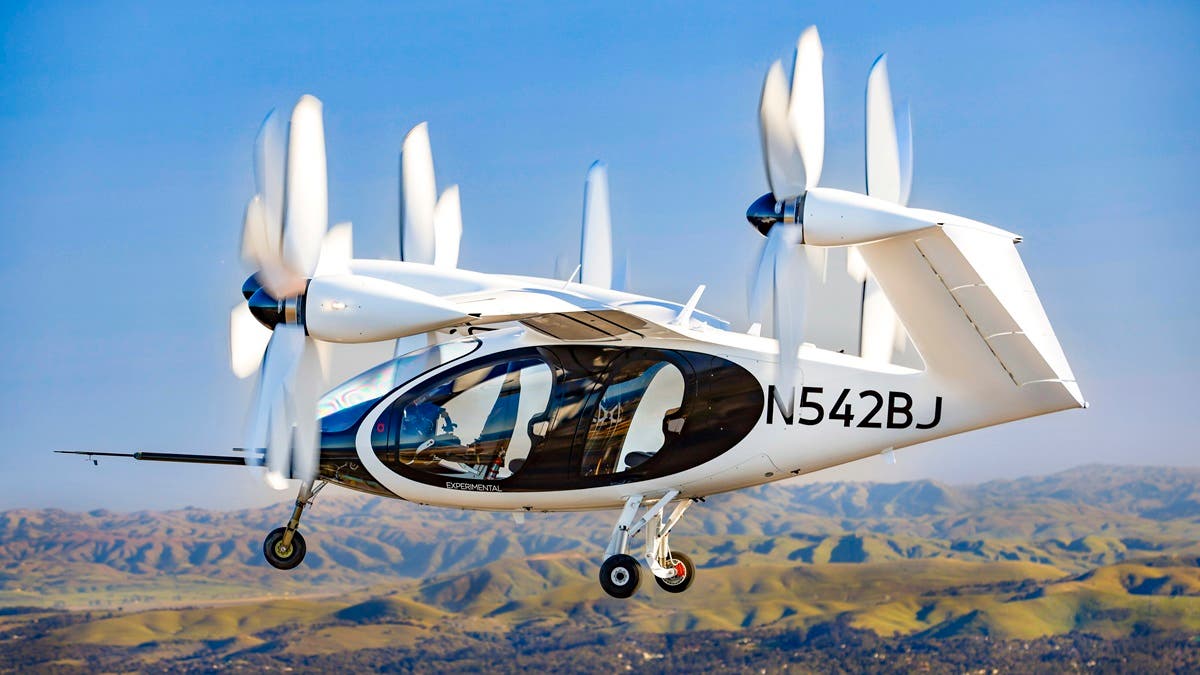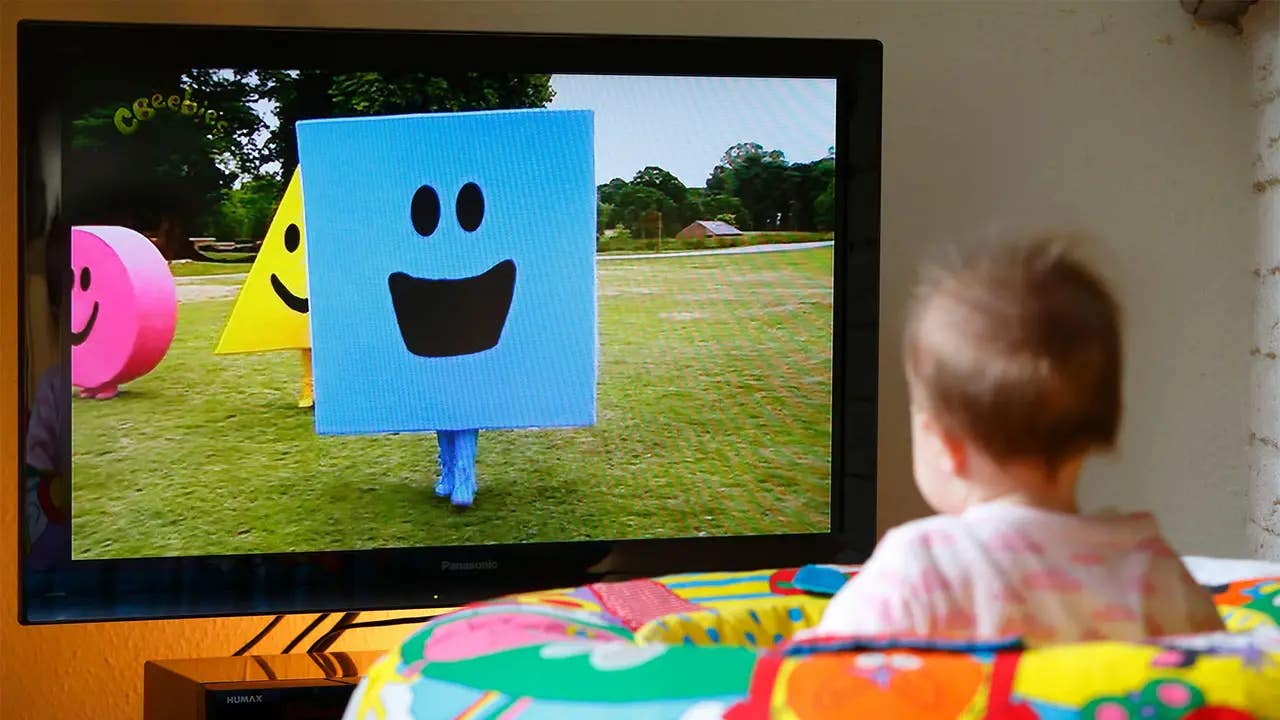Meet Joby: The 200 mph electric aircraft that will redefine commuting
Joby Aviation’s electric air taxi, a game-changer for urban transportation, combining hydrogen and battery power for emission-free travel.

(CREDIT: Joby Aviation)
Joby Aviation, a California-based startup, is developing an all-electric air taxi that could soon be seen above cities worldwide. The company recently showcased their aircraft at The Grove in Los Angeles, giving the public a chance to glimpse the future of urban transportation.
What sets this air taxi apart is its ability to take off and land vertically while flying like a conventional airplane. According to Eric Allison, Joby’s Chief Product Officer, this unique capability “frees you from the traffic in a way that you just can’t right now with any other technology.” Allison’s enthusiasm reflects the promise of a future without the frustrations of city congestion.
The fully electric aircraft reaches speeds up to 200 miles per hour and has a range of about 100 miles. It features innovative propellers that face upwards during takeoff and shift forward for cruising. Engineers have prioritized minimizing noise to ensure the aircraft remains city-friendly—an important consideration when introducing more vehicles into crowded skies.
Allison highlighted this effort, noting, “It can fly really quietly. So if it was flying over here at about a thousand feet, which is like low even for a helicopter, it basically would be silent. You wouldn’t hear it as it flies over.”
Although the model displayed in Los Angeles wasn’t functional, it did give a good impression of what the operational version will be like. The sleek, futuristic exterior complements the clean and minimalist interior, which draws comparisons to Tesla’s software-driven designs. It’s clear that Joby aims for simplicity and efficiency, both in form and function.
The air taxi can technically be flown remotely, but due to Federal Aviation Administration (FAA) regulations, a pilot will be onboard for all passenger flights. Allison believes that this new mode of transportation will change how people view urban mobility. “I think that it starts to change our relationship with mobility. It starts to change how we think about moving around our cities. And I think it makes the world a better place,” he shared.
Related Stories
Los Angeles is one of Joby’s target launch cities, and the timing could align well with upcoming global events. Although Allison didn’t specify an exact launch date, the 2028 Olympics might present an opportunity. With the city’s mayor committed to reducing car use during the event, Joby’s air taxis could play a role in making that vision a reality.
This type of aerial mobility could redefine commuting in Los Angeles. Routes that now require long hours in traffic, such as from LAX to downtown or from the Valley to Santa Monica, could be reduced to just a few minutes. Joby envisions a network of "vertiports" where passengers can access these air taxis, getting to them by walking, biking, or using rideshare services.
The air taxi prototype on display at The Grove drew plenty of onlookers, and the excitement was palpable. Many expressed that they would embrace this solution to bypass the infamous Los Angeles traffic. However, one of the biggest questions surrounding the technology is safety. Allison acknowledged that while he hasn't yet flown in the aircraft himself, he assured the crowd that they have built in redundant safety systems to address potential concerns.
Pricing is another consideration. Initially, the service may be more accessible to wealthier customers who can afford to save time flying above congested streets, but Joby intends to reduce costs as the technology becomes more widespread. Over time, the aim is to make air taxi travel a viable option for a broader range of people.
This push for electric air taxis is part of a larger global trend towards more sustainable energy solutions. As energy production shifts to greener methods, battery technology has emerged as a key enabler of cleaner transportation, including for electric aircraft.
Joby first demonstrated this potential in 2021 when they successfully flew a battery-electric prototype 154 miles on a single charge. Since then, the company has logged over 33,000 miles of battery-electric flight, steadily moving closer to making quiet, emissions-free air travel a reality.
While battery technology is progressing, it does have limitations, particularly when it comes to weight and energy density. For regional markets requiring longer distances, Joby plans to use hydrogen fuel cells to extend both range and payload capacity.
The company recently converted one of its electric prototypes into a hydrogen-electric demonstrator and flew it 523 miles, including a vertical takeoff and landing. This distance is enough to connect cities like San Francisco to San Diego or Boston to Baltimore, all without producing emissions during flight.
The choice to explore hydrogen comes from its superior energy density. Hydrogen has about 100 times the specific energy of current batteries and three times that of jet fuel, making it an excellent candidate for aviation. Instead of relying solely on batteries, Joby’s hydrogen-electric aircraft use onboard fuel cells to generate electricity. This allows the aircraft to travel farther and carry heavier loads compared to battery-only systems or even conventional jet fuel-powered planes.
Another advantage of hydrogen is its flexibility in production. It can be generated using a range of renewable energy sources, such as solar, hydro, and wind power, creating a pathway toward fully zero-emissions aviation. Governments around the globe are investing heavily in hydrogen infrastructure, recognizing its potential as a cornerstone of a clean energy future.
In the United States, the Department of Energy's National Clean Hydrogen Roadmap has earmarked $7 billion for developing ten Hydrogen Hubs across the country, intended to spur the growth of hydrogen production, storage, and distribution.
The aviation sector is particularly well-positioned to benefit from advancements in hydrogen technology. With the potential to power aircraft over regional or even nationwide distances, hydrogen-electric aviation offers a real solution to the environmental impact of air travel.
Currently, aviation accounts for 2-3% of global greenhouse gas emissions, but this impact could rise significantly as other industries decarbonize. According to the International Civil Aviation Organization (ICAO), aviation’s share of climate impact could quadruple by 2050 if effective mitigation strategies are not implemented.
Joby acknowledges that for hydrogen to be widely adopted in aviation, there are still challenges to overcome, such as regulatory hurdles and infrastructure development for fuel storage and distribution.
However, their recent demonstration flights show that regional hydrogen-electric travel is already feasible. It signals a future where hydrogen and battery-electric aircraft could jointly contribute to decarbonizing the aviation industry, helping maintain global connectivity without further harming the environment.
The vision for Joby’s air taxi goes beyond just getting from point A to point B—it’s about rethinking the way cities function and enhancing the quality of life. A transportation system that can whisk you across town in a matter of minutes, with no noise and no emissions, could be transformative. It would provide a more efficient, cleaner option for navigating urban areas, helping reduce both congestion and pollution.
Joby Aviation’s innovations represent a significant leap forward for urban mobility and sustainable aviation. By combining electric and hydrogen technologies, the company aims to address both short-distance urban needs and longer regional travel, all while cutting emissions. The future they envision—one of silent, clean, efficient air taxis—could redefine how cities operate and how people interact with their environments.
Note: Materials provided above by The Brighter Side of News. Content may be edited for style and length.
Like these kind of feel good stories? Get The Brighter Side of News' newsletter.
Rebecca Shavit
Science & Technology Journalist | Innovation Storyteller
Based in Los Angeles, Rebecca Shavit is a dedicated science and technology journalist who writes for The Brighter Side of News, an online publication committed to highlighting positive and transformative stories from around the world. With a passion for uncovering groundbreaking discoveries and innovations, she brings to light the scientific advancements shaping a better future. Her reporting spans a wide range of topics, from cutting-edge medical breakthroughs and artificial intelligence to green technology and space exploration. With a keen ability to translate complex concepts into engaging and accessible stories, she makes science and innovation relatable to a broad audience.



